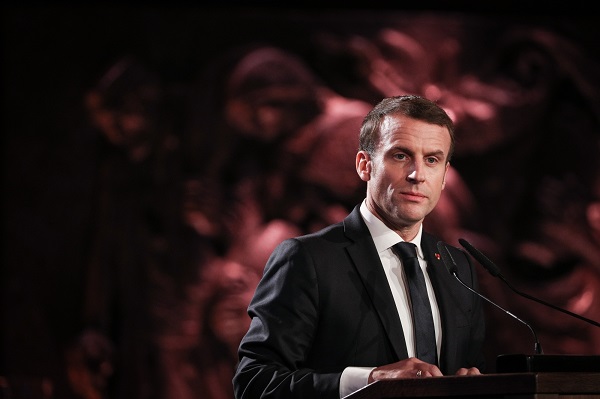New Delhi, (Samajweekly) This Tuesday the world will mark a historic moment with the start of machine assembly of world’s largest experimental fusion reactor at ITER facility in southern France in the virtual presence of host nation President Emmanuel Macron and government leaders from the seven ITER members, including India.
Officials say the launch of the ITER assembly phase is made possible by the arrival of components from all over the world in recent months.
It demonstrates the willingness of 30,000 people of the 35 partner countries and a million complements of the ITER international research project to join together in an enduring way in their common fight against climate change.
French President Macron and leaders from the European Union, China, India, Japan, Korea, Russia and the ITER Organisation declare the beginning of a new energy era with the official start of the assembly of the fusion device at ITER.
Participation will be largely virtual and the event will be broadcast on YouTube live, a spokesperson for ITER told IANS.
This month cryostat manufacturing came to an end in India.
An industrial adventure that began in 2012 has come to an end for Larsen & Toubro teams in Hazira in Gujarat.
Eight years later, 12 segments of the top lid plus one central disk, 650 tonnes in all, will be assembled and welded on site.
Earlier, the soup-bowl-shaped stainless steel base of the cryostat — the foundation of the machine that is India’s in-kind contribution to ITER — was lowered the neighbouring tokamak pit in ITER on May 28.
This operation to lower the heaviest single component of the ITER machine marked the culmination of a 10-year effort to design, manufacture, deliver, assemble and weld one of the most crucial components of the machine that will act as a thermos, insulating the magnetic system at cryogenic temperature from the outside environment.
The elements for the base section were delivered to ITER in December 2015 and the 1,250-tonne component was finalized in July last year.
Also, the design of control (variable frequency drives, electrical panels, etc.) for the ITER cooling water system equipment was jointly done by ITER-India and L&T, while the manufacturing was carried out at L&T’s Hazira facility.
ITER-India is the Indian domestic agency — a specially empowered project of the Institute for Plasma Research (IPR), an organization under the Department of Atomic Energy.
ITER-India is responsible for delivery of cryostat, in-wall shielding, cooling water system, cryogenic system, ion-cyclotron RF heating system, electron cyclotron RF heating system, diagnostic neutral beam system, power supplies and some diagnostics.
Adhering to strict safety guidelines during the Covid-19 pandemic, ITER spokesperson Laban Coblentz told IANS, “We are massively teleworking, both staff and contractors, but still able to maintain critical activities onsite, and have been making progress.”
ITER is made possible through the work of thousands of scientists, engineers, workers of all trades and industries across the globe.
The ITER facility is being built in Saint-Paul-les-Durance, some 35 km north of Aix-en-Provence in southern France.
It will work on the tokamak concept where the reaction of hydrogen isotopes deuterium and tritium produces energy by the mass-energy conversion principle, thereby proving to be a source of unlimited energy.
The project aims to complete through first plasma in 2025, a key milestone toward full fusion power by 2035.
The ITER facility aims to produce about 500 megawatts of thermal power.
Europe will contribute almost half of the cost of its construction, while the other six members of this joint international venture (China, India, Japan, Korea, Russia and the US) will contribute equally to the rest.










